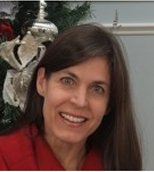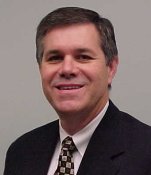July 2013
Tony Davis: Welcome to the Federal Reserve's Economic Development podcast series. I am Tony Davis of the Federal Reserve Bank of New York.
The ability of the workforce development system to meet the short- and long-term labor demands of local employers has proven challenging. Aligning the education sector—including the schools, colleges, and universities—provides yet another layer of complexity. Few communities have been able to sustain a long-term, highly effective approach to workforce development. One example of success is from South Alabama, where the Southwest Alabama Workforce Development Council (or SAWDC) and the Mobile Area Educational Foundation use innovative approaches to manage industry partnerships.
Today we are speaking to Laura Chandler of the Southwest Alabama Workforce Development Council and Sam Covert, longtime board member of the Mobile Area Educational Foundation.
Laura, over the last few years, SAWDC has received numerous national awards for its workforce development approach that is built on working with industry. Please share a bit about the history of the organization and tell us about the critical elements that have enabled success.

Critical elements that have enabled our success…the first thing that comes to mind is certainly our leadership. We are blessed with an incredible group of community leaders, industry leaders that have been with the organization from day one, and so their level of commitment, it's unparalleled. I also think that we have a really strong team and a very clear vision; we have a very clear strategy and set of goals. And then I would say the third critical element is effectively leveraging our partnerships. Our mission statement states that our organization is a facilitator. Our mission is to develop strategic partnerships and that is an area that I think that we've had a lot of success in and it really has allowed us to have as much success as an organization as a whole.

Davis: Laura, the southwest Alabama region is home to traditional industries, such as shipbuilding. More recently, advanced manufacturing has located there, and the new Airbus plant is one example. How are you engaging these employers to ensure their workforce needs are being met?
Chandler: One of our key business processes is engaging our industry clusters. For the last two years, we have been working with the National Fund for Workforce Solutions. It begins with engaging our customer and our customer is our employers. So, we manage four clusters: aviation and aerospace; maritime, which is our shipbuilding and repair; industrial construction and manufacturing, or industry partnership; and also health care. So within that structure, we are able to very clearly identify industry needs, industry demands as it relates to workforce, but also identify policy and systems change required to help more efficiently provide them with a qualified workforce.
Davis: Tell us briefly about the success metrics of your respective organizations. Specifically, how were they developed and how often do you measure against them?
Chandler: At SAWDC, we have several layers of metrics. Several years ago we created a scorecard, which is a set of performance measures for our organization, to allow us to ensure that we're moving forward as it relates to what we said we would do. So some of those measures, performance measures, pertain to our key business processes. For instance, we track all of the grant dollars that are coming into our region through our community colleges based on the percentage that our community colleges bring into our region versus the total state funding, and we compare that to the total workforce in our region. In the last five years, since SAWDC came into existence, SAWDC has directed over $20 million into the region through our community colleges. On average, that's about a quarter annually of total state funding, and the reason that's significant is our region accounts for only 14 percent of the workforce within the state.
We also track all the way down to participant outcomes. We are counting and understanding how many participants are being served, how many candidates are getting into training, the number of candidates that are completing successfully, those that are moving into jobs, and we even track job retention; six months, 12 months, and 24 months.
Covert: The other thing that we measure our success is Mobile Area Education Foundation as a convening organization. What we learned through this work for 20 years is that all stakeholders had to come to the table. That's the K–12 leadership, it's the two-year college system, it's the University of South Alabama Department of Education, it's the faith-based community, it's community service organizations, as well as the employers. We convene those stakeholders that all have different views, and we arrive at solutions.
Davis: Sam, employers are demanding higher skill levels, which makes the role of educational systems an ever more critical component of a community's workforce development system. Yet educational systems face competing priorities and a challenging funding environment. How have the educational systems participated in the success of Southwest Alabama's workforce development efforts?
Covert: I think one of the best things we've done is convening the stakeholders around the table. A great example of where we've come together is in the two-year college system, the Alabama Aviation College here in Mobile and B.C. Rain High School, which is the aviation high school for our area. They have a program there where kids can express an interest and test and commit to do the work of aviation and spend the last two years of their high school career earning dual-enrollment credit. They will be taught by the curriculum of the two-year Aviation College system while they're in high school, thus earning two-year college credit. Some of those instructions will be delivered by the employees in the aviation industry. There will be a lot of hands-on; there will be opportunities for the kids in the high school to visit and do an internship at the various aviation industries on Brookley Field. It's a great example where you've got a partnership of industry, the two-year college system, and the K–12 systems coming together to maximize the dollar, so that we're not duplicating dollars and we're not spending on things that really do not add value to the employers.
Davis: Labor force participation rates have been historically low in the South, and the pool of available workers needed to meet employer vacancies will continue to face pressure. How has southwest Alabama engaged low- and moderate-income populations in workforce development efforts? What have been the challenges, and how have both of you worked to overcome them?
Chandler: The populations that we're working with are low- and moderate-income populations, because the need from our industry is to upgrade the skills of individuals who have little to no skill. Our area is really oversubscribed with low-skilled workers, and the majority of the jobs that are available today require technical training, certain industry-recognized certificates.
So we work specifically in the maritime industry, the industrial construction and manufacturing industries, as well as health care, advancing careers for low-skilled workers by providing them with training that will upgrade their skills, ultimately receiving a credential that's recognized by industry. For instance, we have a rural initiative in Mount Vernon, Alabama, where we are working with Alabama Industrial Development Training (AIDT), as well as the city of Mount Vernon, the Alabama Career Center, Bishop State Community College, and the Central Gulf Industrial Alliance to provide welding training in the city of Mount Vernon, exporting this into the rural community for 22 individuals. Once that training is complete, the employers that represent industrial construction and manufacturing have committed to hiring these individuals.
But there are significant challenges. We have challenges in the adult population as it relates to drugs. We usually have about 10 to 15 percent fallout because an individual has not passed a drug test. We have issues related to not having a GED or a high school diploma. All of our employers, with few exceptions, require either a GED or a high school diploma for employment. There appears to be some "soft skills" training that we need to probably place more emphasis on in the long-term pipeline, because we're having some difficulties with the current workforce as it relates to being there on time, general work ethic–related skills. So I would say those are three of the challenges that we are having right now from the adult perspective.
Covert: From the Mobile Area Education Foundation side, we're going back and addressing the problem. Next year in all of the Mobile County high schools (which is a population of about 65,000 students in that total population of the K–12 system), there will be random drug testing. Throughout our southwest Alabama area, we've been doing a lot to foster dual-enrollment where students in high school start earning recognized credentials for working in high-skilled industries while they're in high school. We think it will help them focus so that when they come out of high school, they'll know a path that they're going on. We're creating career academies in our high school. We establish the right kinds of courses that are recognized by industry in the high school. The kids in high school start seeing the relevance of the education they're getting toward a job, and start relationships with people in business and industry so they can plan their future.
So those are some of the solutions to turning off the pipeline of producing folks who are coming out of school without the requisite skills. It really is a partnership, and we recognize that the K–12 system is absolutely critical to producing the workforce that we need in this area.
Davis: There has been quite a bit of discussion regarding how economic development is related to workforce development, or not. The ability of your organizations to supply a healthy stream of skilled workers has been critical to recent economic development successes in the region, both with existing companies and in the recruitment of industry. Laura, how might workforce and economic development professionals better coordinate their efforts?
Chandler: Our organization and our region have done an excellent job in integrating workforce development and economic development. Specifically, with SAWDC, we have structured our executive committee, which is actually our governing body, to ensure that we have representation throughout our eight-county region of our economic development folks. So I think that's how intimate workforce development, and SAWDC in particular, is with the economic development community.
Covert: They are intricately linked. Economic developers will tell you that one of the most important arrows you can have in your quiver when you're recruiting an economic development prospect is a workforce development system that advocates for their needs and is committed to producing a qualified workforce. Companies can go and get the same bank financing, they can buy the same equipment, you can get the same deals on land, but what a company knows is going to make them successful is the quality of their workforce. If we're going to distinguish ourselves in economic development, we've got to first distinguish ourselves in producing a quality workforce.
Davis: Thank you, Laura and Sam, for speaking with us today.
Chandler: Thanks for having us.
Covert: We appreciate it very much.
Davis: This concludes our podcast. We've been speaking to Laura Chandler of the Southwest Alabama Workforce Development Council and Sam Covert of the Mobile Area Educational Foundation.
Please join us at the 2013 Policy Summit cohosted by the Cleveland and Philadelphia Feds, where we will discuss workforce development, among other topics. The summit is scheduled for September 19–20 in Cleveland. For more information, please visit the Cleveland Fed's website.
For more podcasts on this topic and others, please visit the Atlanta Fed's website at frbatlanta.org. If you have comments or questions, please e-mail podcast@frbatlanta.org. Thanks for listening.


